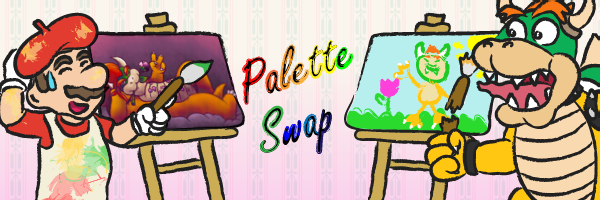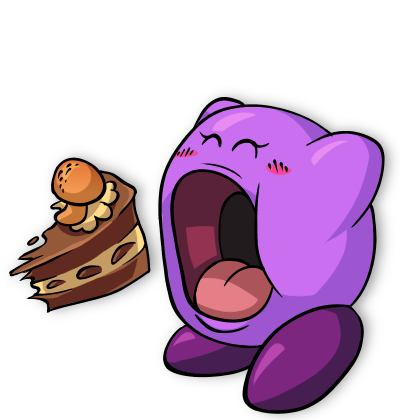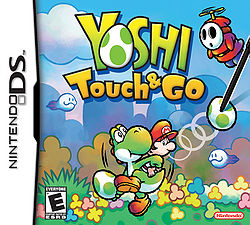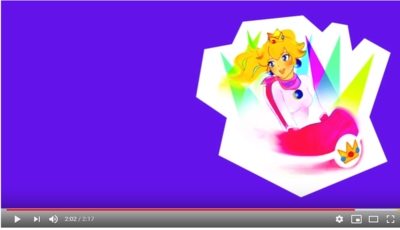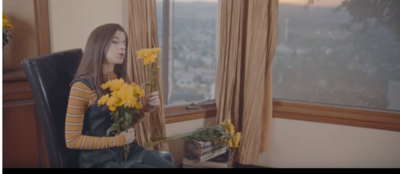The 'Shroom:Issue 147/Palette Swap
Director's Notes
Hey, it's June! Almost summertime!
What an E3, amirite? So many good games. Ni No Kuni, Panzer Dragoon, Spyro, Breath of the Wild 2, Astral Chain, Daemon X Machina, sooooooo many good games! I'm gonna be hurting for money come September. What was your favorite trailer from the Direct? I didn't think Nintendo could top the Cyberpunk Keanu Reeves thing, but I was wrong, they blew it out of the water. Good job, Nintendo, you did a good.
I'll shut up so you can check out our great sections this month- I wouldn't want you to miss anything! ~FunkyK38
Section of the Month
Yet again, another win for Yoshi876 (talk) with his What's on the Box? section looking at the boxart of Nintendo Land! Thanks very much for voting, everyone!
| Palette Swap SECTION OF THE MONTH | ||||
|---|---|---|---|---|
| Place | Section | Votes | % | Writer |
| 1st | What's on the Box? | 15 | 75% | Yoshi876 |
| 2nd | Ongoing Fan Projects | 4 | 20% | The Pyro Guy |
| 3nd | Touhou (Remix) Project | 1 | 5% | Superchao |
What's on the Box?
Hello readers, and welcome back to What's on the Box.
We are heading back to the Yoshi series, and snubbing a mainline Mario game once again as this month we take a look at the boxart for Yoshi Touch & Go one of the first games for the Nintendo DS. And as one of the first games, it was mostly an attempt to showcase what the hardware could do as opposed to being a general game.
It's certainly different from other games in the Yoshi series, although Baby Luigi does still get kidnapped. He's been kidnapped so much that he doesn't even appear on the boxart for the game. Instead, the boxart features Yoshi, Baby Mario, a Fly Guy and two Cloud Drops. It is nice to see the Cloud Drops get onto a boxart, as they have been a staple enemy in the Yoshi's Island series, appearing pretty frequently in the games and yet usually snubbed on the boxart.
But with that said, it is a little strange to see the designers opt to go for a Fly Guy rather than the standard Shy Guy. However, with dual screens, aerial enemies are more likely to be expected, which might be why these two airborne enemies appear. And like I said earlier in this section, the game was sort of a tech showcase, and as such the Nintendo DS stylus makes an appearance on the boxart, showing the play how it can be used to aim eggs. Although, it neglects to mention how the stylus is also used to draw cloud bridges.
As is the standard in the Yoshi series, the 'o' in Yoshi has been replaced with a Yoshi Egg, and once again the boxart takes place in a really lovely field, probably something that appears in World 1. It is nice to see these touches continue throughout the games. It is understandable why the boxart doesn't massively showcase the sky sequences, as it may be harder to draw Yoshi attempting to throw his eggs while falling through the sky, but it would have been neat to see them in some form.
Overall, despite being a game that was more of a tech show-off, this is a really nicely designed boxart, I think the colours used are really eye-catching, it's nice to see enemies not often put on the boxart appearing, and overall I enjoy looking at it.
Mario's Boombox
Written by: Hooded Pitohui (talk)
This month, it's time to take a closer look at another artist who was previously briefly featured in this section. You might remember Adriana Figueroa, better known as Adrisaurus, from her collaboration on "Ashley's Song" with Carlos Eiene, but she's been a prolific producer of videogame-inspired music herself, so she deserves some time in the spotlight. Adriana makes a wide variety of music; she's taken inspiration from videogames, anime, Western animation. and popular movies. In addition, she's even written a few original pieces. Despite the great range in where she takes musical inspiration, there's a unifying electric-pop theme behind much (though certainly not all) of her work. Of course, for the purposes of this section, we'll be focusing in on her videogame music. Adriana is yet another artist who has too much to cover in one article, so instead, we'll look at highlights from the three main categories her work falls into: English covers, covers, and what she terms "vocal covers."
Adriana has taken a number of songs straight from videogames which feature lyrics in a variety of languages and has given them English lyrics which retain the original spirit of the song while fitting nicely with the tune. Her pop-style immediately shines through with her cover of K/DA's "Pop/Stars", a promotional song from League of Legends. Her choice of instrumentation and her translation of the lyrics conveys the aggressive self-confidence of the song, and she keeps intact the more traditional pop chorus and the more rap-like portions of the songs all at once. A more upbeat pop-style song comes in the form of her cover of of Splatoon's "Splatfest Hub (Night)". For anyone who has heard the original and the distinguishable "get ready" in its otherwise difficult-to-comprehend "lyrics," this cover will be immediately recognizable. If you hope for something a little slower, you might be interested in her English cover of "Kami-iro Awase" from Danganronpa 3. Adriana's lyrics keep to the tune nicely while preserving the series' famous "hope versus despair" conflict.
Of course, lyrical songs have become an increasingly common fixture in videogames, so it should come as no surprise that Adriana, with her penchant for making covers, has taken plenty of famous lyrical songs in videogames. More than likely, you've heard these songs before. So rather than talk about them individually, I'll focus on the sheer variety and how she adapts the instrumentation of each cover to her voice and vision. She works with a great varieto of pieces, but plays on her strengths by fitting them to her pop style. From Persona 5, she has covers of "Beneath the Mask" and "The Whims of Fate". From Fire Emblem Fates come the iconic "Lost in Thoughts All Alone" and, in Japanese, a dance-like version of "Azura's/Aqua's Theme. Two of Nintendo's hit titles are represented by Super Mario Odyssey's "Jump Up, Superstar!" and Super Smash Bros. Ultimate's "Lifelight". Indie titles aren't left out int the cold, either. The memorable ending themes from Doki Doki Literature Club and Deltarune, "Your Reality" and "Don't Forget", are part of Adriana's collection of songs, with the latter even getting a whole music video.
Adriana makes plenty of great covers, but she truly shines when she produces what she terms her "vocal covers." It's really nothing more than a fancy way of saying she's a part of the time-honored tradition of adding lyrics to music from videogames, but she does exceptionally well in presenting striking versions of well-known pieces. She avoids simply adding lyrics to existing music; instead she reworks the music from the ground up. Her vocal covers take a holistic approach to revising these pieces, so the instrumentation and tone are changed to match the lyrics. Her work also shows more variety with these pieces than anywhere else. "Love You Love You Love" from Mighty Switch Force and "Courtroom Révolutionnaire" from Ace Attorney might stay in-step with the pop style of most of her other pieces, but Animal Crossing's "K. K. Bossa" strikes a much more relaxed and free-spirited tone. The song comes across as feeling true to the relaxed K. K. Slider, and strikes the right tone to leave listeners feeling like they're actually on a tropical vacation. "The Ballad of Jeff" is an emotional and charming take on Winters' Theme from Earthbound, and takes a completely different approach in style. "Ballad of the Goddess" from The Legend of Zelda: Skyward Sword is another stylistic oddity, and is additionally notable for having its new lyrics be in Japanese, rather than English. "Home" from Undertale is another slower song from Adriana, and captures the friendly if overprotective nature of Toriel effectively. If you want to finish off with one more upbeat techno-pop song, listen to "Turn it Up", Adriana's take on the theme of the Electrodome from Mario Kart 8. Like "Pop/Stars" it has an aggressive style, but its less one of self-assertion and more one of being the hippest thing to walk into a rave and knowing it.
If I were to select my personal favorites from Adriana's vocal covers, though, I would have to point towards a trio of songs from Undertale. While all of her pieces find a good balance between remaking a piece and keeping the original recognizable, these three pieces carry much greater emotional impacts. They feel like completely new songs while still being instantly familiar, and do an exceptional job of capturing the characters and moments of the game in their tone and lyrics. First, there's the charming and affable yet dangerous and menacing "Spider Dance". The original piece was already an earworm, the kind of music with a beat that makes listeners want to get up and dance, or at least tap their feet. Adriana's version keeps this intact while adding the tale of Muffet's confrontation in lyrical form."Megalovania", though successfully inverts the original piece on its head. Sans' battle theme often gets remixed as, well, an epic battle theme full of guitar and frighteningly aggressive piano, so it feels like a refreshing change of pace to hear a version that goes for a more ominous tone with a sinister underlying piano. It captures Sans' judgement of the player character in his confrontation, and his deep anger at the player's actions; it comes across less as an outburst than tranquil fury. Finally, there's "ASGORE", a suitably epic but heartfelt song for the final confrontation with the great king of monsters. This song is not just a vocal cover; it's also an orchestral cover. The music itself feels completely new when backed by the sounds of a full orchestra. The song alternates between emphasizing the grandiose orchestral final battle aspects of the piece and slowing down as it focuses on Asgore's internal conflict as he tries to balance what he must do and what he does not want to do. If anyone is to only ever hear one piece from Adriana, I would recommend that piece be "ASGORE."
That said, even the songs listed here fail to capture everything Adriana has made. She has plenty of other videogame-inspired songs, as well as numerous other pieces. She has a little of something to capture everyone's interests, whether those interests are Steven Universe, Hocus Pocus, Avatar: The Last Airbender, or even Jojo's Bizarre Adventure. So, listen to "ASGORE", sample any other songs here which catch your eye, and go on to look through Adriana's YouTube account to dig up songs from the rest of your favorite works of fiction.
| The 'Shroom: Issue 147 | |
|---|---|
| Staff sections | Staff Notes • The 'Shroom Spotlight • Poll Chairperson Election |
| Features | Fake News • Fun Stuff • Palette Swap • Pipe Plaza • Critic Corner • Strategy Wing |
| Specials | Community Awards Dossier |
